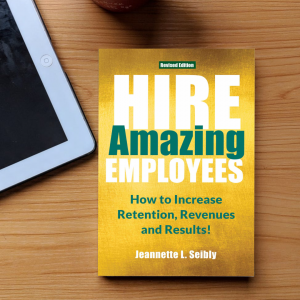
Most of you would say, “Of course.”
But earlier today, when a co-worker or employee needed to talk, you played Spider Solitaire or let your thoughts wander while they spoke. Then, when they asked a question, you replied, “Could you please repeat that? I wasn’t listening.” You do that more than once.
I remember coaching a young man whose company had asked me to support his leadership growth. During the call, I suspected he wasn’t listening. I asked what he was doing.
He twitched and said, “Listening.”
“No, what are you really doing?”
He gave a sheepish grin and admitted he was watching a newsfeed on his phone.
“You do remember the purpose of these calls is to prepare you for a promotion, correct?” He nodded.
“As a leader, you need to learn how to truly listen—especially when you don’t want to hear what someone is saying.”
He asked, “Why? If they’re boring or I’ve heard it before?”
I responded, “Because in your listening, you and others can hear something new … a solution … new opportunity … new possibility. It’s how you develop your leadership—and your people. Otherwise, your legacy might be, ‘He never listened.’”
Several years ago, I was walking in the one-mile parklike setting where I live. There are usually plenty of people out with their dogs. Sometimes, they’ll even talk with you!
I recognized a dog, so I stopped to pet her. I asked the woman, “How are you doing? How’s Sadie?” She’d adopted the dog just a month earlier.
She said, “I’m good. Sadie’s doing well, too.” I smiled. Then she added, “I had been visualizing this dog. Other opportunities fell through, but I kept visualizing. Now, here she is.”
Why was this important to me? My cat had just passed away. I wasn’t sure if I wanted another. But in that moment of being open and listening, I knew I did. Later, I started visualizing. Even cut out a picture. Within a short time, I adopted Remy from the local humane shelter.
It happened because I was open to listening.
What Do You Need to Do to Improve Your Openness to Listening?
- Be Curious. You don’t know it all. You never will. When you bring curiosity to your listening, you learn, grow, and develop ideas or dreams.
- Ask Questions. There are books filled with conversation starters. They’re helpful. When using these ideas, these prompts can also unlock deeper thoughts you’ve been mulling over. If you don’t have a book with question starters, use your curiosity and ask open-ended questions. This is much better than gossiping—or recycling the same old ideas.
- Humble Up. Your ego will try to protect you by refusing to listen. When you hear new ideas, you might feel excited… then uncomfortable… then fearful. That’s a good sign. It means the ideas are nudging you forward. Acknowledge your feelings—and keep the ideas flowing. Then, take focused action on one of them! What opened up?
Here’s another way to look at it: Wouldn’t it be better if your legacy said, “He was a great boss because he really listened,” rather than, “I hated going to work each day because he never listened to anything I said.”
©Jeannette Seibly 2025 All Rights Reserved
 Jeannette Seibly is a legacy-driven Talent Advisor, Leadership Results Coach, and Amazon Best-Selling Business Author. For over 33 years, she has empowered thousands of executives and business leaders to achieve sustainable success through strategic hiring, values-based coaching, and intentional leadership development. Her work blends clarity, accountability, and soulful impact—activating performance and purpose at every level.
Jeannette Seibly is a legacy-driven Talent Advisor, Leadership Results Coach, and Amazon Best-Selling Business Author. For over 33 years, she has empowered thousands of executives and business leaders to achieve sustainable success through strategic hiring, values-based coaching, and intentional leadership development. Her work blends clarity, accountability, and soulful impact—activating performance and purpose at every level.
Ready to elevate your openness to positively impact your next chapter? Let’s talk.


 Jeannette Seibly, an award-winning Talent Advisor, Leadership Results Coach, and Business Author, has guided thousands of executives and business leaders to achieve remarkable success over the past 33 years. Her specialty is delivering innovative solutions for hiring, coaching, and leadership challenges—with excellence and accountability at the core.
Jeannette Seibly, an award-winning Talent Advisor, Leadership Results Coach, and Business Author, has guided thousands of executives and business leaders to achieve remarkable success over the past 33 years. Her specialty is delivering innovative solutions for hiring, coaching, and leadership challenges—with excellence and accountability at the core. 
 Jeannette Seibly, an award-winning Talent Advisor, Leadership Results Coach, and Business Author, has guided thousands of executives and business leaders to achieve remarkable success over the past 32 years. Her specialty is delivering innovative solutions for hiring, coaching, and leadership challenges—with excellence and accountability at the core.
Jeannette Seibly, an award-winning Talent Advisor, Leadership Results Coach, and Business Author, has guided thousands of executives and business leaders to achieve remarkable success over the past 32 years. Her specialty is delivering innovative solutions for hiring, coaching, and leadership challenges—with excellence and accountability at the core.

 Grab her book,
Grab her book, 
 Now is the time to get into focused action! Are there days you dread doing what is needed to manage your people, projects, and team’s financial performance? You’re not alone! Everyone has those days! But continuing to hide behind excuses only hurts you and your future promotability. I have extensive experience and wisdom guiding bosses and leaders to hire, coach, and manage their teams successfully – this includes getting you out of the way and working with and through people effectively to achieve the results required.
Now is the time to get into focused action! Are there days you dread doing what is needed to manage your people, projects, and team’s financial performance? You’re not alone! Everyone has those days! But continuing to hide behind excuses only hurts you and your future promotability. I have extensive experience and wisdom guiding bosses and leaders to hire, coach, and manage their teams successfully – this includes getting you out of the way and working with and through people effectively to achieve the results required. 
 Now is the time to get into focused action! Are there days you dread doing what is needed to manage your people, projects, and team’s financial performance? You’re not alone! Everyone has those days! But continuing to hide behind excuses only hurts you and your future promotability. I have extensive experience and wisdom guiding bosses and leaders to hire, coach, and manage their teams successfully – this includes getting you out of the way and working with and through people effectively to achieve the results required. Contact me to learn more about my in-depth, one-on-one, customized coaching programs.
Now is the time to get into focused action! Are there days you dread doing what is needed to manage your people, projects, and team’s financial performance? You’re not alone! Everyone has those days! But continuing to hide behind excuses only hurts you and your future promotability. I have extensive experience and wisdom guiding bosses and leaders to hire, coach, and manage their teams successfully – this includes getting you out of the way and working with and through people effectively to achieve the results required. Contact me to learn more about my in-depth, one-on-one, customized coaching programs.
 Now is the time to get into focused action! Are there days you dread doing what is needed to manage your people, projects, and team’s financial performance? You’re not alone! Everyone has those days! But continuing to hide behind excuses only hurts you and your future promotability. I have extensive experience and wisdom guiding bosses and leaders to hire, coach, and manage their teams successfully – this includes getting you out of the way and working with and through people effectively to achieve the results required.
Now is the time to get into focused action! Are there days you dread doing what is needed to manage your people, projects, and team’s financial performance? You’re not alone! Everyone has those days! But continuing to hide behind excuses only hurts you and your future promotability. I have extensive experience and wisdom guiding bosses and leaders to hire, coach, and manage their teams successfully – this includes getting you out of the way and working with and through people effectively to achieve the results required. 
 It’s time to get honest and real! Are there days you dread managing people, projects, and your team’s financial performance? You’re not alone! Everyone has their blind spots! NOW is the time to get the guidance you need to make the right changes during 2024. I have extensive experience and wisdom guiding bosses and leaders to hire, coach, and manage their teams successfully. The bonus is that they achieve unprecedented results.
It’s time to get honest and real! Are there days you dread managing people, projects, and your team’s financial performance? You’re not alone! Everyone has their blind spots! NOW is the time to get the guidance you need to make the right changes during 2024. I have extensive experience and wisdom guiding bosses and leaders to hire, coach, and manage their teams successfully. The bonus is that they achieve unprecedented results.